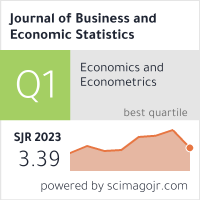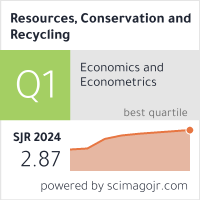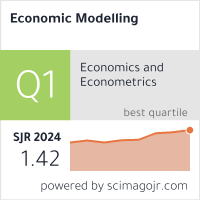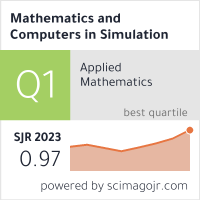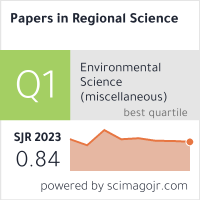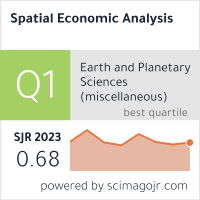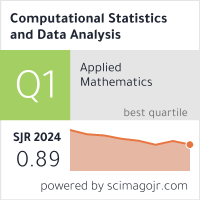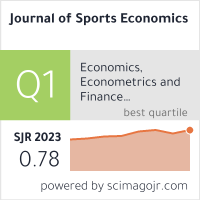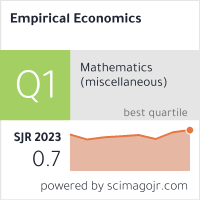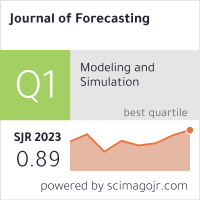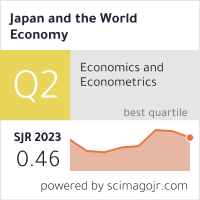Research
Working Papers / Works in Progress
- Kakamu, K.
"Bayesian analysis of mixtures of lognormal distribution with an unknown number of components from grouped data," submitted. [arXiv]
- Kawakubo, Y. and Kakamu, K.
"Multilevel decomposition of generalized entropy measures using constrained Bayes estimation: An application to Japanese regional data," submitted. [arXiv]
- Kakamu, K.
"Bayesian dynamic modeling of Gini coefficients from grouped data," in progress.
- Kakamu, K.
"Bayesian analysis of aging and declining household size effects on income distribution in Japan," in progress.
- Kakamu, K., Kamiya, S., Staufer-Steinnocher, P., Yamasaki, T. and Yanase, N.
"Context comes to mind: Evidence and implications for protection against catastrophes," forthcoming in North American Actuarial Journal. [SSRN]
- Kakamu, K. (2025)
"On the use of harmonic mean estimator for selecting the hypothetical income distribution from grouped data,"
Journal of Risk and Financial Management, 18, 72.
- Sanko, N., Sakai, H., Kakamu, K. and Nakamura, E. (2023)
"Cost structure changes in the Japanese local bus sector in an era of deregulation: A Bayesian gradual switching approach,"
Journal of Transport Economics and Policy, 57, 151-176.
- Tham, A.W., Kakamu, K. and Liu, S. (2023)
"Bayesian statistics for loan default,"
Journal of Risk and Financial Management, 16, 203.
- Kunimoto, N and Kakamu, K. (2022)
"Is Bitcoin really a currency? A viewpoint of a stochastic volatility model,"
Applied Economics, 54, 6536-6550. [arXiv]
- Feldkircher, M. and Kakamu, K. (2022)
"How does monetary policy affect income inequality in Japan? Evidence from grouped data,"
Empirical Economics, 62, 2307-2327. [arXiv]
- Kobayashi, G., Yamauchi, Y., Kakamu, K., Kawakubo, Y. and Sugasawa, S. (2022)
"Bayesian approach to Lorenz curve using time series grouped data,"
Journal of Business & Economic Statistics, 40, 897-912. [arXiv]
- Kakamu, K. and Nishino, H. (2019)
"Bayesian estimation of beta-type distribution parameters based on grouped data,"
Computational Economics, 53, 625-645.
- Kobayashi, G. and Kakamu, K. (2019)
"Approximate Bayesian computation for Lorenz curves from grouped data,"
Computational Statistics, 34, 253-279. [arXiv]
- Ohtsuka, Y. and Kakamu, K. (2018)
"Regional growth and business cycles in Japan,"
Review of Urban & Regional Development Studies, 30, 1-25.
- Usui, T., Chikasada, M. and Kakamu, K. (2017)
"Does garbage pricing increase immoral disposal of household waste?,"
Applied Economics, 49, 3829-3840.
- Kakamu, K. (2016)
"Simulation studies comparing Dagum and Singh-Maddala income distributions,"
Computational Economics, 48, 593-605.
- Wang, Y. and Kakamu, K. (2016)
"Comment on "Measuring the performance of nations at Beijing summer Olympics using integer-valued DEA model","
Journal of Sports Economics, 17, 418-422.
- Nishino, H. and Kakamu, K. (2015)
"A random walk stochastic volatility model for income inequality,"
Japan and the World Economy, 36, 21-28.
- Usui, T., Kakamu, K. and Chikasada, M. (2015)
"To introduce recycling or not: A panel data analysis in Japan,"
Resources, Conservation & Recycling, 101, 84-95.
- Ohtsuka, Y. and Kakamu, K. (2015)
"Comparison of the sampling efficiency in spatial autoregressive model,"
Open Journal of Statistics, 5, 10-20.
- Kobayashi, G., Kakamu, K., Sato, E. and Kozumi, H. (2014)
"An integrated purchase model using Gaussian Copula,"
Behaviormetrika, 41(2), 147-167.
- Kakamu, K, Yunoue, H. and Kuramoto, T. (2014)
"Spatial patterns of flypaper effects for local expenditure by policy objective in Japan: A Bayesian approach,"
Economic Modelling, 37, 500-506.
- Nishino, H. and Kakamu, K. (2013)
"Bayesian Whittle estimation of ARFIMA model,"
Advances and Applications in Statistics, 37(2), 149-170.
- Ohtsuka, Y. and Kakamu, K. (2013)
"Space-time model versus VAR model: Forecasting electricity demand in Japan,"
Journal of Forecasting, 32(1), 75-85.
- Nishino, H., Kakamu, K. and Oga, T. (2012)
"Bayesian estimation of persistent income inequality using the lognormal stochastic volatility model,"
Journal of Income Distribution, 21(1), 88-101.
- Kakamu, K., Polasek, W. and Wago, H. (2012)
"Production technology and agglomeration for Japanese prefectures during 1991-2000,"
Papers in Regional Science, 91(1), 29-41.
- Nishino, H. and Kakamu, K. (2011)
"Grouped data estimation and testing of Gini coefficient using lognormal distributions,"
Sankhya B, 73(2), 193-210.
- Ohtsuka, Y., Oga, T. and Kakamu, K. (2010)
"Forecasting electricity demand in Japan: A Bayesian spatial autoregressive ARMA approach,"
Computational Statistics & Data Analysis, 54(11), 2721-2735.
- Kakamu, K. and Fukushige, M. (2009)
"Multilevel decomposition methods for income inequality measures,"
Japanese Economic Review, 60(3), 333-344.
- Kakamu, K. (2009)
"Small sample properties and model choice in spatial models: A Bayesian approach,"
Far East Journal of Applied Mathematics, 34(1), 31-56.
- Kakamu, K. and Wago, H. (2008)
"Small-sample properties of panel spatial autoregressive models: Comparison of the Bayesian and maximum likelihood methods,"
Spatial Economic Analysis, 3(3), 305-319.
- Kakamu, K., Polasek, W. and Wago, H. (2008)
"Spatial interaction of crime incidents in Japan,"
Mathematics and Computers in Simulation, 78(2-3), 276-282.
- Kakamu, K. (2008)
"Spatial patterns of production activity in Japanese MEA: A Bayesian approach,"
Empirical Economics Letters, 7(2), 137-143.
- Mizobuchi, K. and Kakamu, K. (2007)
"Simulation studies on the CO2 emission reduction efficiency in spatial econometrics: A case of Japan,"
Economics Bulletin, 18(4), 1-9.
- Kakamu, K. and Fukushige, M. (2006)
"Productivity convergence of manufacturing industries in Japanese MEA,"
Applied Economics Letters, 13(10), 649-653.
- Kakamu, K. (2005)
"Bayesian estimation of a distance functional weight matrix model,"
Economics Bulletin, 3(57), 1-6.
- Kakamu, K. and Fukushige, M. (2005)
"Divergence or convergence?: Income inequality between cities, towns and villages in Japan,"
Japan and the World Economy, 17(4), 407-416.
- Suzuki, K., Kakamu, K. and Fukushige, M. (2003)
"How much effect does human capital have on interregional income differentials in Japan?,"
Studies in Regional Science, 33(1), 129-139.
Chapters in Books
- Nakamura, E., Urakami, T and Kakamu, K. (2019)
"Bayesian stochastic frontier model with endogenous regressors: An application to the effect of division of labor in Japanese water supply organizations,"
(Jeliazkov, I. and Tobias, J. eds.)
Topics in Identification, Limited Dependent Variables, Partial Observability, Experimentation, and Flexible Modeling: Part B (Advances in Econometrics, Volume 40B), , Emerald Publishing Limited, 29-46.
- Kakamu, K. and Wago, H. (2014)
"School choice effects in Tokyo metropolitan area: A Bayesian spatial quantile regression approach,"
(Jeliazkov, I. and Yang, X.-S. eds)
Bayesian Inference in the Social Sciences, John Wiley & Sons, Ltd., 317-329.
- Kakamu, K., Ohtsuka, Y. and Arasawa, S. (2011)
"On the roles of spatial interactions and heteroscedasticity in crime modeling,"
(Hasselm, A.E. ed)
Crime: Causes, Types and Victims, Nova Science Publishers, 211-220.
- Kakamu, K., Wago, H. and Tanizaki, H. (2010)
"Estimation of regional business cycle in Japan using Bayesian panel spatial autoregressive probit model,"
(Nolin, T.P. ed)
Handbook of Regional Economics, Nova Science Publishers, 555-571.
- Ohtsuka, Y. and Kakamu, K. (2009)
"Estimation of electric demand in Japan: A Bayesian spatial autoregressive AR(p) approach,"
(Schwartz, L.V. ed)
Inflation: Causes and Effects, Nova Science Publishers, 156-178.
- Kakamu, K., Polasek, W. and Wago, H. (2007)
"Model choice for panel spatial models: Crime modeling in Japan,"
(Decker, R. and Lenz, H.-J. eds)
Advances in Data Analysis, Springer, 237-244.
Other Publications
- Kakamu, K., Polasek, W. and Wago, H. (2007)
"Spatial agglomeration and spill-over analysis for Japanese prefectures during 1991-2000,"
Proceedings of International Congress on Modelling and Simulation, 958-964.
- Kakamu, K., Polasek, W. and Wago, H. (2005)
"Spatial interaction of crime incidents in Japan,"
Proceedings of International Congress on Modelling and Simulation, 407-413.
- Kakamu, K. and Wago, H. (2005)
"Bayesian spatial panel probit model with an application to business cycle in Japan,"
Proceedings of International Congress on Modelling and Simulation, 856-863.
Scimago Journal Rankings for selected journals where I have published
